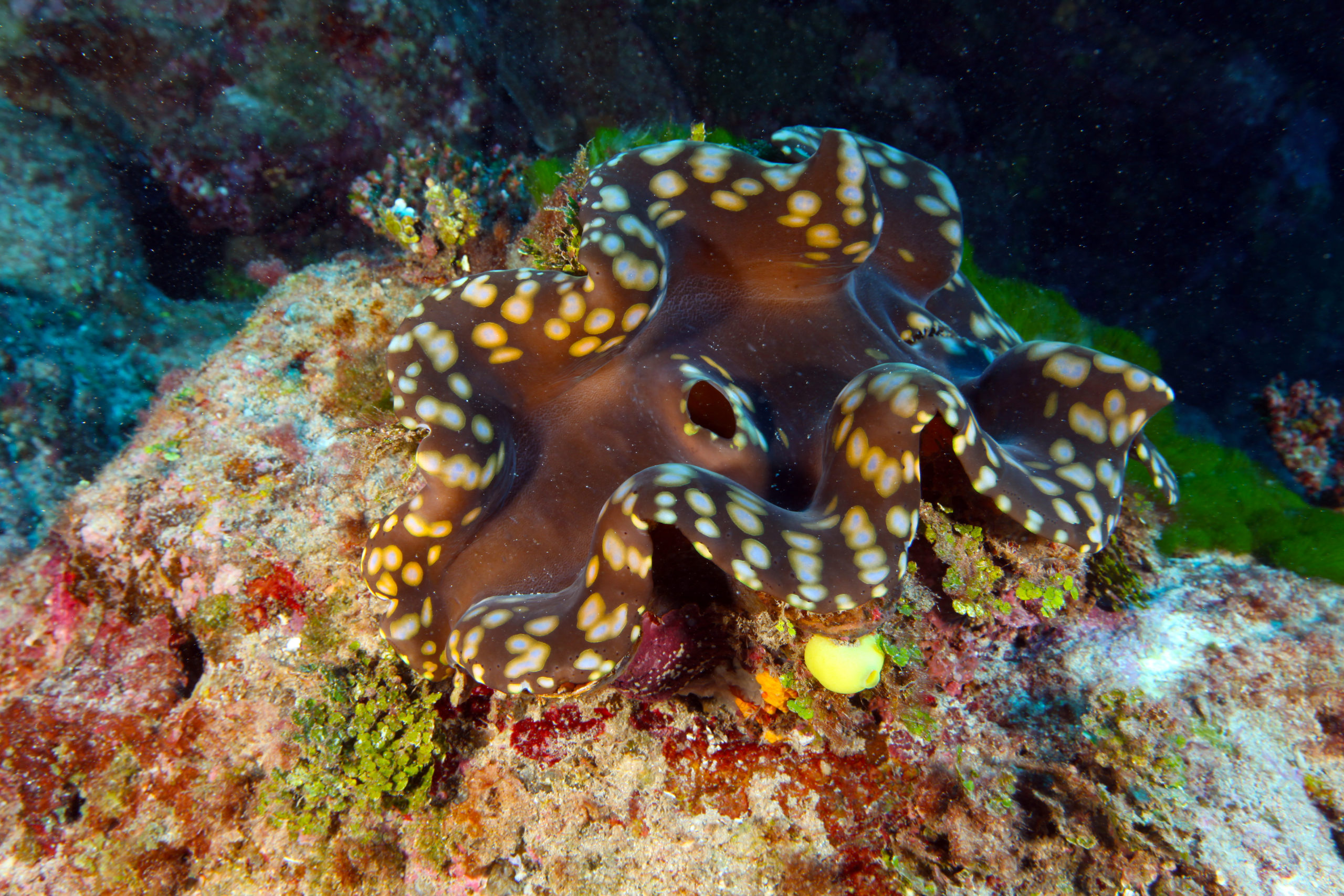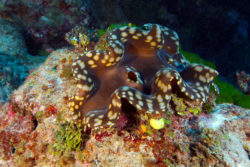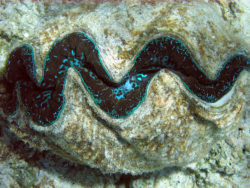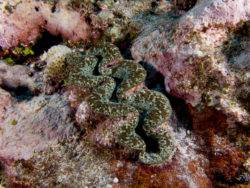
Sea Wonder: Giant Clam

The giant clam (Tridacna gigas) is – you guessed it – humongous! It is the largest of all bivalve mollusks in the world, reaching lengths of more than 4 feet, and they can live for nearly a century.
Description
Giant clams have multiple vertical folds in their thick, heavy shells that give them their characteristic wavy opening. Unlike other species of clams, this one can never completely close its shell to protect its soft mantle, which is usually yellow, golden brown, or green and marked with iridescent blue, purple, or green spots as well as clear spots called windows. The windows allow sunlight to filter in and allow algae inside the clam’s shell to photosynthesize. In the mantle are two siphons, one used to pull seawater and plankton into the mantle and the other pushes water out of the shell during spawning. Like fingerprints, no two colorations and patterns found in giant clams are the same.
The largest observed giant clam weighed nearly 550 pounds and its shell four and a half feet wide. Some seafaring myths and legends say giant clams are so large they can eat humans, but no one has ever observed or reported a clam doing so.
 Diet & Habitat
Diet & Habitat
Giant clams are omnivores and filter feeders. They pull water into their mantle and filter both zooplankton and phytoplankton from it. The clams’ shells also provide protection for billions of algae in exchange for the opportunity to feed on the sugars and proteins the algae produce through photosynthesis. The algae are what produce the bright and beautiful colors seen on the clams’ mantles.
Giant clams live in the warm waters of the South Pacific and Indian Oceans and are seen in the National Marine Sanctuary of American Samoa. They settle in shallower lagoons and coastal waters where enough sunlight can reach them, and where plankton are plentiful in the water column.
Life History
Giant clams are sessile animals, meaning they live in one place for their entire lives. They start their lives as planktonic larvae, which swim and feed in the water column until they reach their next stage, which is when they find a safe place to settle. They attach to reefs, rocks, or other steady surfaces and can take decades to reach their full size. Giant clams reproduce via external fertilization, an event that involves clams releasing eggs and sperm into the water column. Individuals can release both eggs and sperm but cannot self-fertilize. They can live to be a maximum of 100 years old and are not social animals.
Threats & Conservation
Giant clams have a wide range of ecological roles within their ecosystems, including production of food for other animals, filtering excess nutrients from the water, and strengthening reefs. Unfortunately, ocean acidification, climate change, and overharvesting (for food, the aquarium trade, or decoration) are all threats to giant clam populations. Currently, giant clam species are listed as vulnerable on the IUCN red list.

